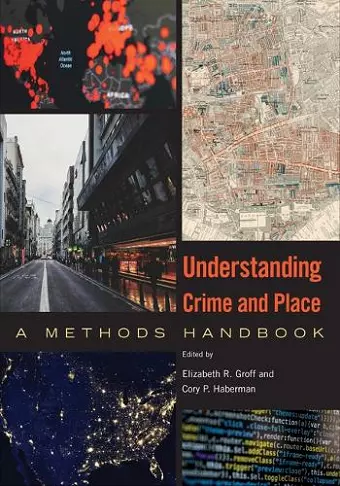Understanding Crime and Place
A Methods Handbook
Elizabeth R Groff editor Cory P Haberman editor
Format:Paperback
Publisher:Temple University Press,U.S.
Published:24th Mar '23
Should be back in stock very soon

Place has become both a major field of criminological study as well as an important area for policy development. Capturing state of the art crime and place research methods and analysis, Understanding Crime and Place is a comprehensive Handbook focused on the specific skills researchers need.
The editors and contributors are scholars who have been fundamental in introducing or developing a particular method for crime and place research. Understanding Crime and Place is organized around the scientific process, introducing major crime and place theories and concepts, discussions of data and data collection, core spatial data concepts, as well as statistical and computational techniques for analyzing spatial data and place-based evaluation. The lessons in the book are supplemented by additional instructions, examples, problems, and datasets available for download.
Conducting place-based research is an emerging field that requires a wide range of cutting-edge methods and analysis techniques that are only beginning to be widely taught in criminology. Understanding Crime and Place bridges that gap, formalizes the discipline, and promotes an even greater use of place-based research.
Contributors: Martin A. Andresen, Matthew P J Ashby, Eric Beauregard, Wim Bernasco, Daniel Birks, Hervé Borrion, Kate Bowers, Anthony A. Braga, Tom Brenneman, David Buil-Gil, Meagan Cahill, Stefano Caneppele, Julien Chopin, Jeffrey E. Clutter, Toby Davies, Hashem Dehghanniri, Jillian Shafer Desmond, Beidi Dong, John E. Eck, Miriam Esteve, Timothy C. Hart, Georgia Hassall, David N. Hatten, Julie Hibdon, James Hunter, Shane D. Johnson, Samuel Langton, YongJei Lee, Ned Levine, Brian Lockwood, Dominique Lord, Nick Malleson, Dennis Mares, David Mazeika, Lorraine Mazerolle, Asier Moneva, Andrew Newton, Bradley J. O’Guinn, Ajima Olaghere, Graham C. Ousey, Ken Pease, Eric L. Piza, Jerry Ratcliffe, Caterina G. Roman, Stijn Ruiter, Reka Solymosi, Evan T. Sorg, Wouter Steenbeek, Hannah Steinman, Ralph B. Taylor, Marie Skubak Tillyer, Lisa Tompson, Brandon Turchan, David Weisburd, Brandon C. Welsh, Clair White, Douglas J. Wiebe, Pamela Wilcox, David B. Wilson, Alese Wooditch, Kathryn Wuschke, Sue-Ming Yang, and the editors.
“Understanding Crime and Place is an impressive collection of methods in spatial criminology. It sets itself apart through its breadth, depth, and practical orientation. The editors and contributors cover just about everything one needs to conduct an empirical research study on place-based crime, starting with theory and moving on to data collection, spatial units, and all the way to evaluation methods. The scope and accessibility of Understanding Crime and Place will appeal to a wide range of expertise levels. This book deserves to be on the bookshelf of any criminologist interested in the influences of place and space on crime.”—Michael Townsley, Professor of Criminology and Criminal Justice at Griffith University, and editor of Environmental Criminology and Crime Analysis (Second Edition)
“An understanding of place is as important to the study of crime as an appreciation of victims, offenders, and police. The consistency of geography allows for reliable measurements and objective analyses, enabling the development of practical crime prevention and control techniques. This methods handbook establishes a solid theoretical and methodological foundation, and the broad range of conceptual, measurement, and analytic topics discussed by the contributors will be appreciated by scholars and practitioners alike.”—D. Kim Rossmo, Professor, School of Criminal Justice and Criminology, Texas State University, and author of Criminal Investigative Failures
"Overall, the handbook serves as an excellent primer for anyone interested in crime and place research. It supplies readers with the cutting-edge analytic techniques being used in the field. The book still pays homage to communities and crime research by including sections on larger spatial units such as neighborhoods.... In the years ahead, people should come to see the book as foundational given the book can serve researchers, practitioners, instructors, and students."—Criminal Law and Criminal Justice Books
ISBN: 9781439920671
Dimensions: 254mm x 178mm x 18mm
Weight: unknown
552 pages